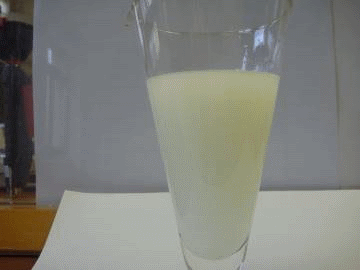






There exist two half-reactions of thiosulfate in acid medium:
(1) $4{S_2}O_3^{2-}$ $..$ $\longrightarrow$ $ S_8 $
(Product: Sulfur, a yellow precipitate)
The oxidation number of the $S$ atoms varies from $4\cdot 2\cdot 2$ $=$ $16$ to $8\cdot 0$ $=$ $0$, therefore this is a reduction with gain of $16e^-$:
$4S_2O_3^{2-}$ $+$ $16e^-$ $+$ $24H^+$ $\longrightarrow$ $S_8$ $+$ $8H_2O$
(2) $S_2O_3^{2-}$ $..$ $\longrightarrow$ $2 SO_4^{2-}$
The oxidation number of the $S$ atoms varies from $2\cdot 2=4$ to $2\cdot 6=12$, therefore this is an oxidation with loss of $8e^-$:
$S_2O_3^{2-}$ $-$ $8e^-$ $+$ $5H_2O$ $\longrightarrow$ $2SO_4^{2-}$ $+$ $10H^+$
Now the complete equation :
$4S_2O_3^{2-}$ $+$ $16e^-$ $+$ $24H^+$ $\longrightarrow$ $S_8$ $+$ $8H_2O$
$S_2O_3^{2-}$ $-$ $8e^-$ $+$ $5H_2O$ $\longrightarrow$ $2SO_4^{2-}$ $+$ $10H^+$ | $\cdot 2$
 $6S_2O_3^{2-}$ $+$ $4H^+$ $\longrightarrow$ $S_8$ $+$ $4SO_4^{2-}$ $+$ $2H_2O$
$6S_2O_3^{2-}$ $+$ $4H^+$ $\longrightarrow$ $S_8$ $+$ $4SO_4^{2-}$ $+$ $2H_2O$
As the thiosulfate ion is oxidised and reduced simultaneously, it is said to dismutate.